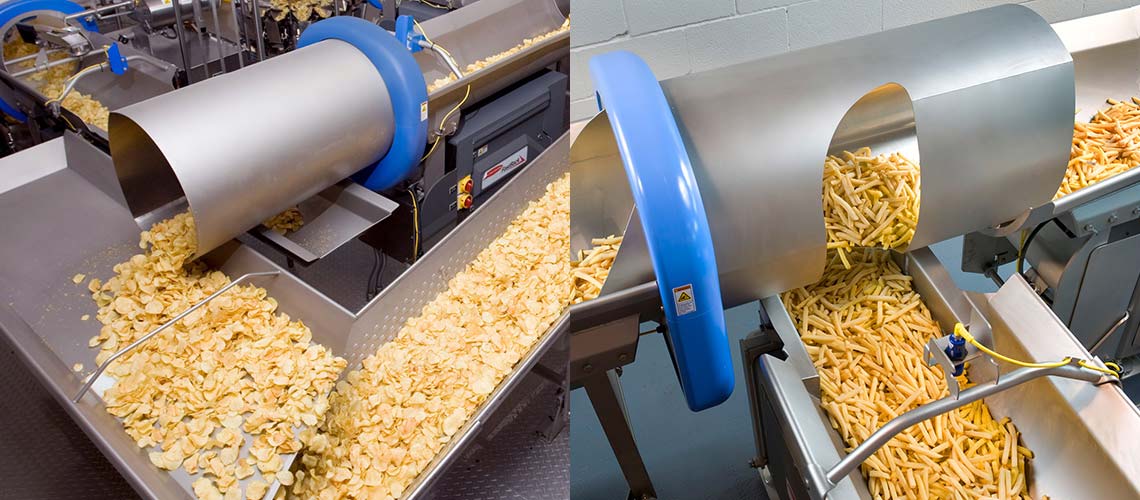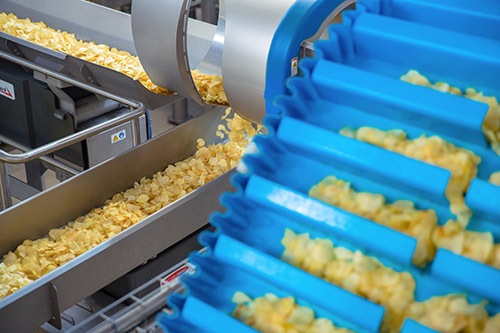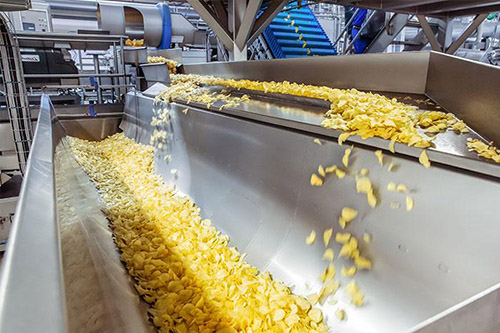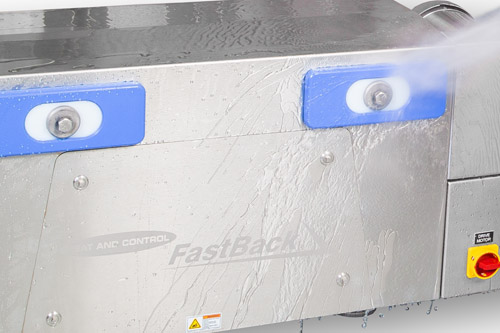Blake Svejkovsky shares his knowledge of conveying systems and how to apply conveying solutions in potato production lines.

The world consumes a lot of potato, and potato processing lines are some of the largest and sophisticated in the food industry especially in terms of volume of throughput and capacity. In this Q&A, Blake Svejkovsky shares his knowledge of conveying systems and how to apply conveying solutions in potato production lines such as potato chips, French fries, and potato co-products to achieve line flow efficiency.
 At the simplest level, conveyors are designed to connect critical process points within a potato processing plant, and the best conveyors do so with minimal damage to the product as they move product along as quickly as possible. Beyond that, conveying systems provide key internodal functions such as product accumulation or buffering, metering, overcoming changes in elevation, and dividing product flow to parallel unit operations. The best conveying systems will provide these functions safely and sanitarily without exorbitant cost or maintenance time.
At the simplest level, conveyors are designed to connect critical process points within a potato processing plant, and the best conveyors do so with minimal damage to the product as they move product along as quickly as possible. Beyond that, conveying systems provide key internodal functions such as product accumulation or buffering, metering, overcoming changes in elevation, and dividing product flow to parallel unit operations. The best conveying systems will provide these functions safely and sanitarily without exorbitant cost or maintenance time.
The most used materials for conveyor systems include stainless steel usually 304 and in some cases 316, polyvinyl chloride (PVC) and other thermoplastics, polyethylene, polypropylene, and UHMW, Belted conveyors are designed with any combination of these materials, while the best horizontal motion conveyors are almost completely stainless steel.
Potato processors typically use as many types of conveyors as there are processing nodes which they connect because each node will have its own unique requirements of their bridging conveyors, e.g., dirt removal for raw products, de-oiling for fried products, seasoning in kitchen and at the weigher.

For both raw material and finished product, a technology called Revolution Gate in conjunction with mass flow capability provides highly granular, accurate and repeatable metering of product without spillage, damage, or complicated mechanism. In addition, the use of metering conveyors in conjunction with accumulation buffers can provide a more general metering method. Storage bins can buffer the flow of raw potatoes to subsequent processing points, potato processors can also employ conveyor systems augmented with sensors for volumetric flow control, and weight-based mass flow systems to control transference rates. Weight-based mass flow conveyor systems use high-resolution load cells to provide the most direct and precise means of measuring and adjusting product flow and are also used for finished potato products along with other systems, such as accumulating conveyors.
Although all conveyors should be robustly constructed to provide long mean times before failure, each conveyor should be designed according to the demands of its processing area. Usually, the most heavy-duty conveyors are those within the raw produce handling area.
 Conveyors can be fitted with a variety of screens which provide dirt, water, slicing slivers, oil, and crumb extraction. Conveyors are also designed with a variety of gates; this allows for on-demand distribution of product to multiple end points, each of which may produce unique finished products. Finally, the integration of more specialized features and subsystems can transform a conveyor into an entirely unique system, such as an accumulation or a seasoning system; both can transfer product and provide critical functions within potato processing plants.
Conveyors can be fitted with a variety of screens which provide dirt, water, slicing slivers, oil, and crumb extraction. Conveyors are also designed with a variety of gates; this allows for on-demand distribution of product to multiple end points, each of which may produce unique finished products. Finally, the integration of more specialized features and subsystems can transform a conveyor into an entirely unique system, such as an accumulation or a seasoning system; both can transfer product and provide critical functions within potato processing plants.
The most challenging aspect is designing for critical and all-important sanitation needs. This covers both food safety as well as productivity and up time. The best systems are designed for minimal sanitation cleaning and the highest sanitation levels. In addition, designing transference systems against limited space constraints, especially because conveyors are typically needed to provide more functionality than basic transference, a fact which adds to the complexity of their arrangement within tight spaces. With this fact in mind, the next most challenging aspect may be maintenance accessibility. The best conveying systems will not only facilitate ease of maintenance access (i.e., access to its component parts) but will not require any preventive maintenance. Closely following maintenance accessibility within tight space constraints is the challenge of sanitation operations. Again, the best conveyors will be designed for wash-and-go or wipe-and-go sanitation, which means that conveyors and their component parts will resist debris buildup, allowing them to be cleaned in place with little investment of time and effort. Beyond these spatially related challenges, when it comes to conveying systems, potato processors face the challenge of cost constraints, installation timing, and gaining a clear and accurate understanding of all requirements early in the project life cycle.
Besides researching the most energy-efficient conveying systems, potato processors should partner with an experienced vendor who will provide a detailed throughput analysis as a part of the discovery process to ensure that conveyors are adequately sized for the job. An oversized conveyor will require more energy and will take up more space than smaller models, while an undersized conveyor may become bogged down, creating bottlenecks in the product flow and risk product damage. State-of-the-art conveying systems will also be designed to work in concert using advanced controls and information systems which ensure that product flow remains balanced throughout the plant and that no system is over-fed or starved for product. Such controls-enabled responsiveness and interconnectivity means that conveyors consume only the energy needed to move just the required amount of product at any given time as quickly as possible without damage.
 Every processor’s worst nightmare is a product recall: hours and even days of productivity may be wasted right along with the product itself, not to mention possible impacts to consumer health and the loss of consumer confidence. Therefore, sanitation considerations of conveying systems cannot be overstated. Processors do everything in their power to enforce robust sanitation standards in their plants, and to assist them in their efforts, the most experienced conveying systems providers are food-safety-focused above all else, providing systems:
Every processor’s worst nightmare is a product recall: hours and even days of productivity may be wasted right along with the product itself, not to mention possible impacts to consumer health and the loss of consumer confidence. Therefore, sanitation considerations of conveying systems cannot be overstated. Processors do everything in their power to enforce robust sanitation standards in their plants, and to assist them in their efforts, the most experienced conveying systems providers are food-safety-focused above all else, providing systems:
Such conveyor systems certainly save processors sanitation labor-hours in the short term but also buffer against the unfortunate occurrence of product contamination.
General Manager, Product Handling Systems